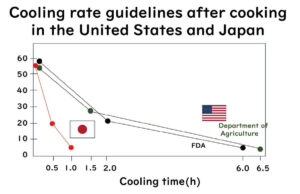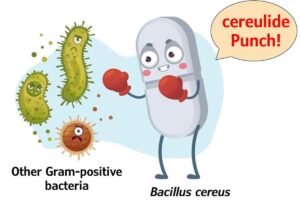Bacillus cereus
Dive into the world of Bacillus cereus, a foodborne pathogen known for causing two types of food poisoning: emetic syndrome and diarrheal syndrome. This category covers its prevalence in various foods, toxin production mechanisms, growth conditions, and effective control measures. Learn how to detect and mitigate Bacillus cereus risks to ensure food safety and quality in diverse food processing environments.
Bacillus cereus Hazards in Cooling Cooked Rice: Exact Temperature and Time to Prevent Food Poisoning
In this article, we will delve into crucial research findings by USDA researchers on the relationship between the cooling rate of cooked rice and the growth of Bacillus cereus, and explore preventive measures against food poisoning caused by Bacillus cereus in detail.
Not Made for Us: The Ecological Origins of Bacillus cereus Toxin
Research shows that the pathogenic factors of foodborne microorganisms harmful to humans have not necessarily evolved to target humans. In this article, we introduce studies on cereulide, the emetic toxin responsible for food poisoning caused by Bacillus cereus. One such study suggests that cereulide, which causes vomiting, might originally function as an ionophore antibiotic in nature, attacking other bacteria, rather than targeting humans.
Bacillus cereus: Understanding Food Safety Risks and Effective Prevention
Explore the hidden world of Bacillus cereus, a persistent and often-overlooked bacteria found in everyday meals. Learn how it thrives—from the unnoticed corners of your kitchen to the plate on your table. Understand the two distinct patterns of food poisoning it causes: one marked by nausea and vomiting, the other by persistent diarrhoea. Most importantly, discover the critical kitchen strategy of rapid cooling to stop this heat-resistant microbe from multiplying. Ready to take control and protect your meals from this silent threat?


